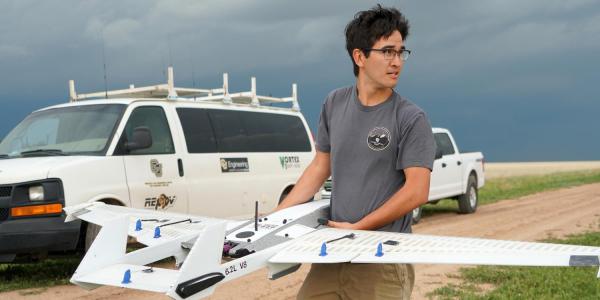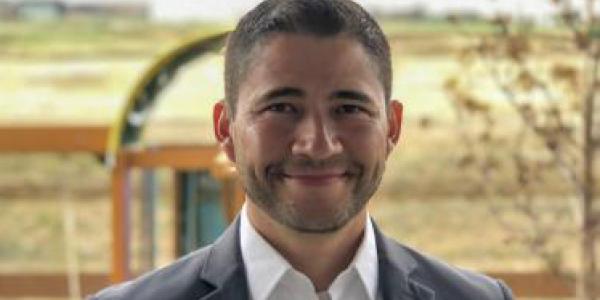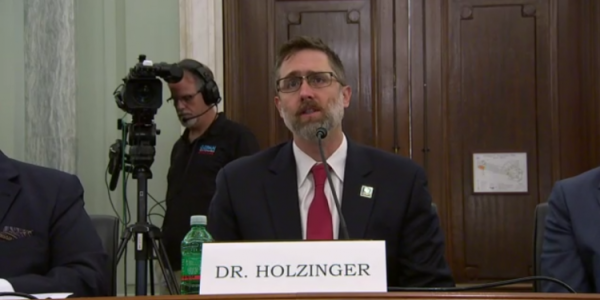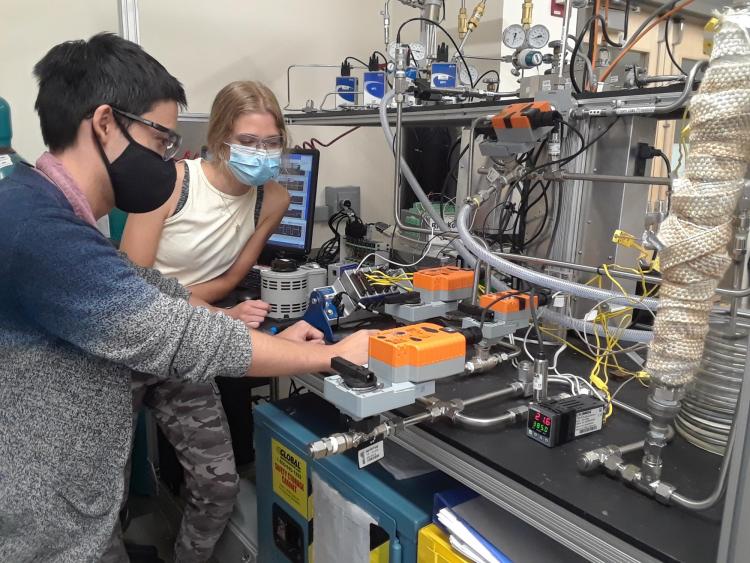 Vicki Hurd, an aerospace senior and Discovery Learning Apprentice, and Sam Eshima, an aerospace PhD student advised by Professor James Nabity, working with the ‘Simulation Testbed for Exploration Vehicle ECLSS’ (STEVE). This facility is used in the HOME project to generate experimental data on life support system processes for incorporation into Machine Learning decision making and model validation processes.
Vicki Hurd, an aerospace senior and Discovery Learning Apprentice, and Sam Eshima, an aerospace PhD student advised by Professor James Nabity, working with the ‘Simulation Testbed for Exploration Vehicle ECLSS’ (STEVE). This facility is used in the HOME project to generate experimental data on life support system processes for incorporation into Machine Learning decision making and model validation processes.While the pandemic added an extra layer of difficulty on top of the normal challenges of launching a center-scale research initiative, leadership at the University of Colorado Boulder say a $15 million NASA funded institute around space habitats that began here in 2019 has hit many of its early goals.
“I am really proud of the work that we have done to date and the way we have been able to keep communicating and collaborating through the pandemic,” said David Klaus, professor of aerospace engineering sciences and leader of the CU Boulder team. “It is a big diverse group of students, faculty, scientists and engineers from around the country – all collaborating to explore the challenge of enabling increasingly-autonomous, deep-space smart habitats.”
The Habitats Optimized for Missions of Exploration (HOME) NASA research institute recently released a year-two, 400 page annual report which includes updates on many key benchmarks and details for future planning. The institute was launched as a five-year, multi-disciplinary, multi-university effort to advance space habitat designs using resilient and autonomous systems. In addition to leading CU Boulder’s work, Klaus serves as deputy director for the institute.
HOME is part of a larger effort being pursued by NASA to prepare for a time when astronauts will venture further into space, out of low-Earth orbit and on to the Moon, Mars and beyond. To that end, researchers are trying to advance nascent technologies related to autonomous systems, human and automation teaming, data science, and onboard manufacturing – all of which are critical to improving and preserving life in space for astronauts. The work breaks down along four research thrusts related to meeting the vehicle’s functional design needs, enabling self-awareness, optimizing partnership between autonomous systems and crew, and achieving self-sufficiency.
Over the last two years researchers in the HOME Institute have created detailed plans and logged significant progress in each of those areas. The team has also hosted a series of technical seminars to integrate and educate a broad research community, said Klaus.
“The autonomous systems we are designing must possess the ability to learn from experience, training, and, or human demonstration over time,” Klaus said. “All of which is intended to make the habitat safer and more suitable for a mission that might last several years, like the ones NASA is now planning. They also must work in a variety of environments – whether that is on the Moon or Mars or microgravity in space. The development and testing of those kinds of technologies and how they pair with humans has been our central focus over the last two years.”
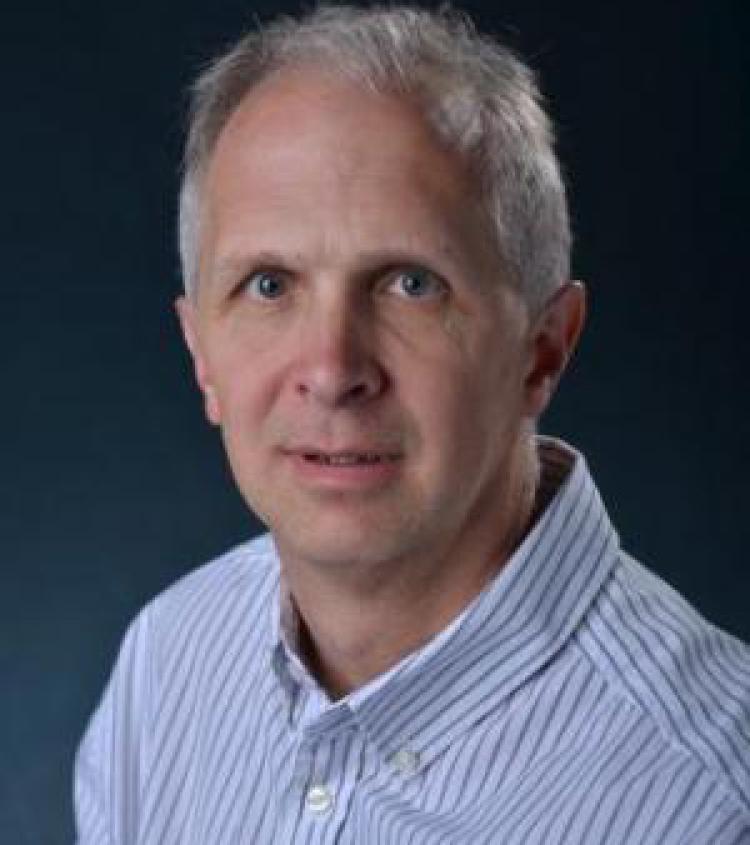
David Klaus
In addition to his leadership role at CU Boulder, Klaus is also in charge of the first research thrust centered around vehicle functional design. That aspect is in partnership with Howard University’s Department of Architecture and explores new paradigms for deep-space habitats that must be resilient and flexible to changing situations – even if the crew is not present. He said that team is now beginning to incorporate how multifunctional and reconfigurable elements, biomorphic surfaces and specified lighting strategies may be of benefit in the habitat.
“The term for that is adaptive architecture, where the systems are not static but instead evolve and change based on a variety of factors,” Klaus said. “A lot of the work in the first year was around defining functionality and mental health factors in that domain and now we are starting to look at how we can actually achieve some of those goals and make them a reality.”
The entire HOME project is led by the University of California Davis, teamed with the University of Colorado Boulder, Carnegie Mellon University, the Georgia Institute of Technology, Howard University, Texas A&M University, and the University of Southern California. Corporate partners are Blue Origin, Sierra Nevada Corporation, and United Technologies Aerospace Systems.
Other CU Boulder faculty members involved with the HOME project include Associate Professor James Nabity, and Assistant Professors Allie Anderson and Torin Clark. All three are based in the Ann and H.J. Smead Department of Aerospace Engineering Sciences.

